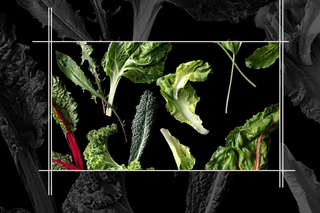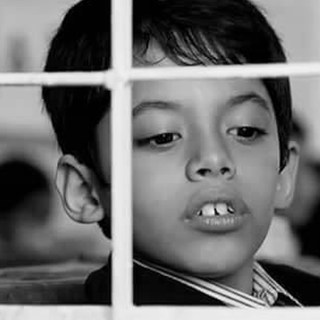
India Consumed 16% Fewer Iron‑Rich Vegetables in the Past Decade
Experts say this is one reason why 50% of children, and 60% of women between 15 and 49, suffer from anemia.

A recent report by NITI Aayog, a policy think tank of the Indian government, has stated that India is home to the largest number of malnourished children in the world. This comes despite the fact that the countrydramatically reduced the number of people living in extreme poverty—from 306 million people to 48 million today.
One reason for malnourishment, they said, was that in the decade between 2005-06 and 2015-16, the daily consumption of iron-rich, dark green, leafy vegetables reduced from 64% to 48%.
The same decade witnessed a 0.9% decrease in stunting rates in children, and lower rates of anemia, but the decline was not enough, and the conditions still affect every second child in the country.
There has also been no perceptible decline in anemia among 15- to 49-year-old women, and the disease now affects around 60% of them.
Anemia, whether at a high or low level can affect a child’s energy, focus, and ability to learn, says Dr. Jharna Jhaveri, a Mumbai-based paediatrician running her own practice. “Chronic iron deficiency or anemia can result in long-term, permanent impairment of development,” she adds.
Related on The Swaddle:
What’s the Deal with Vitamin B12?
It can also cause abnormal paleness, irritability, an increased heart rate, an enlarged spleen, or even lead to a condition called pica that creates a desire to eat peculiar substances such as dirt or ice among children.
The problem lies in our diet, says Dr. Jhaveri, and more importantly, the lack of nutritious diet that must include green, leafy, iron-rich vegetables.
As per a report in Down To Earth, 93% of children between ages 9 and 17 consume packaged food and drink sugar-sweetened beverages more than once a week. 53% consume these products at least once a day, while 27% eat fast food at least once a week.
Worse, older children are more likely to consume packaged food. As per the report, 59% of children between 14 and 17 years consumed packaged food or beverages at least once a day.
Related on The Swaddle:
When You Should Worry About Fatigue
“Indians, especially children, are eating a diet far from ideal. They’re consuming more carbohydrates, less protein and less fruit and vegetables than necessary, leading to increased cases of anemia,” says Dr. Manjeet Narang, a Mumbai-based paediatrician with Mamta Maternity Home.
The only two ways to become anemia-free is to either consume an iron-rich diet or take iron supplements. “But for children, iron supplements are not recommended. Parents would rather ensure that they consume leafy greens, legumes, meats, poultry and fish,” advises Dr. Narang.
As far as anaemia in women is concerned, the disease, according to the current report, has affected 60% of them. Doctors say it is common among 15- and 49-year-olds but not something that should be taken lightly.
It can leave women feeling fatigued, lower the quality of life and if left untreated, iron-deficiency can cause serious health problems, say doctors. Dr. Narang says, having too little oxygen in the body can damange organs. “With anaemia, the heart must work harder to make up for the lack of red blood cells or haemoglobin. This extra work can harm the heart.” And most importantly, he adds, “Iron-deficiency anaemia can also cause problems during pregnancy.”
Therefore, the NITI Aayog report has called this, “…a public health emergency that needs to be addressed immediately.” Besides poverty, gender disparity, poor sanitation and low health that are issues that need to be addressed to uplift people out of malnourishment, they added that the government’s real problem that continues to impede their fight against anemia is a poor nutrition service coverage and poor nutritional intake—particularly an iron-deficient diet. Until people themselves don’t ensure or stop young ones from having food that is not iron-rich, the struggle to overcome the condition may be a long and hard one.
Anubhuti Matta is an associate editor with The Swaddle. When not at work, she's busy pursuing kathak, reading books on and by women in the Middle East or making dresses out of Indian prints.
Related


We’re Living With A False Sense of Security About Marijuana
